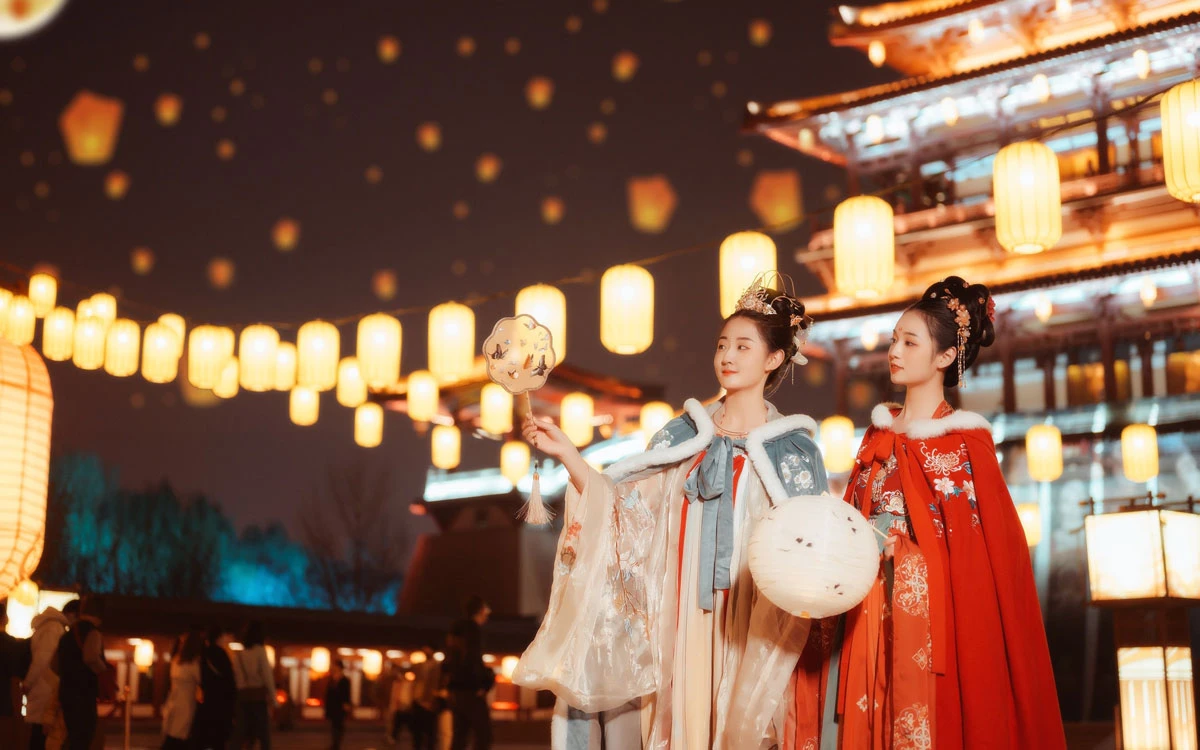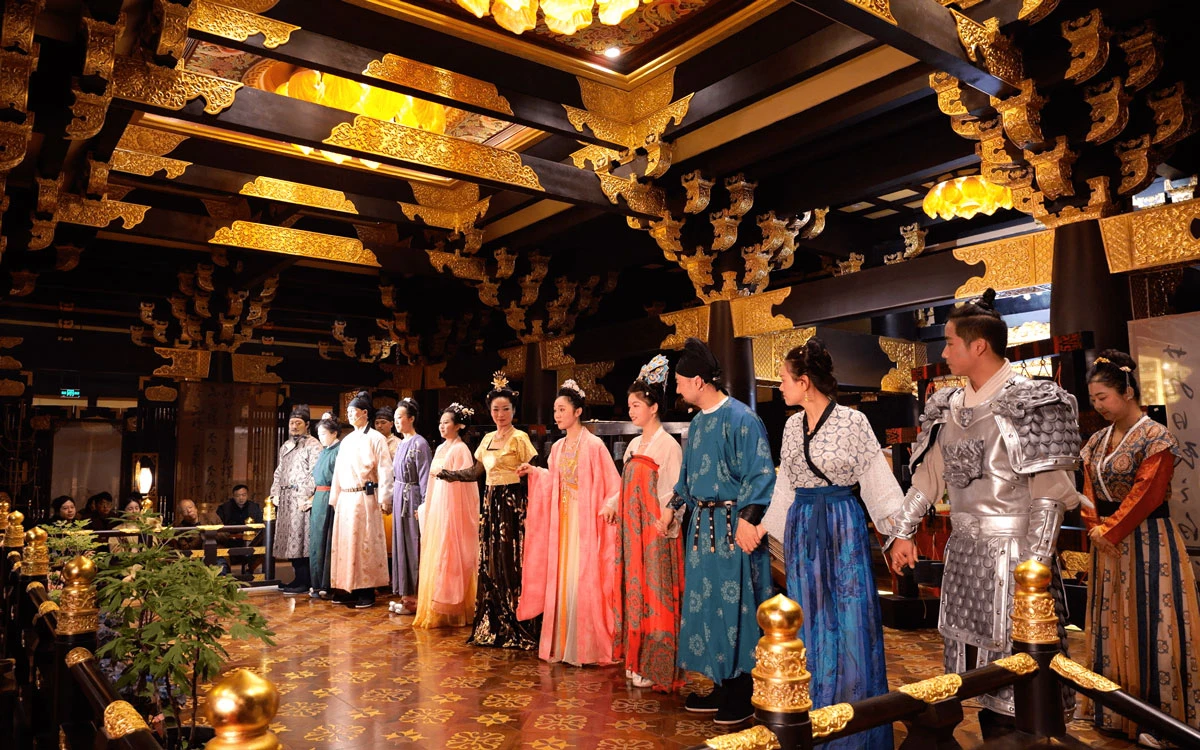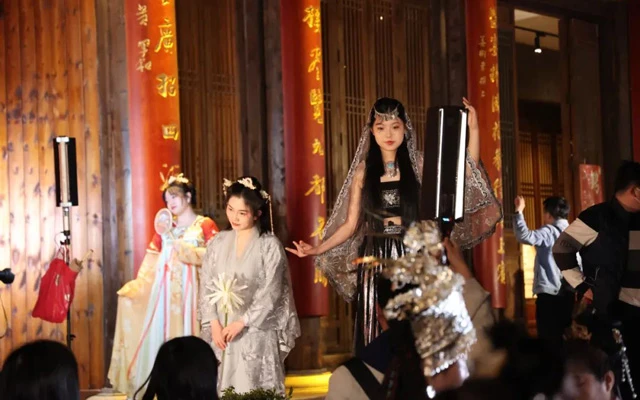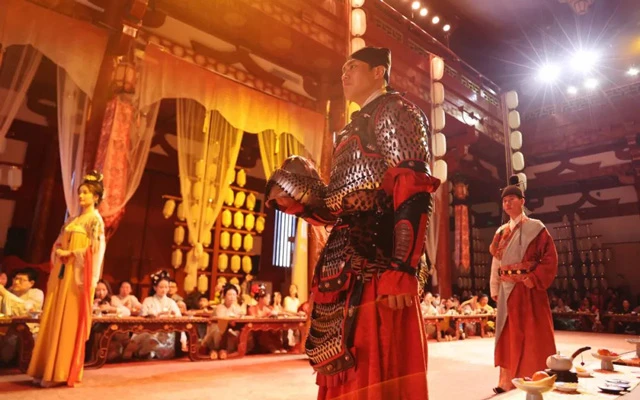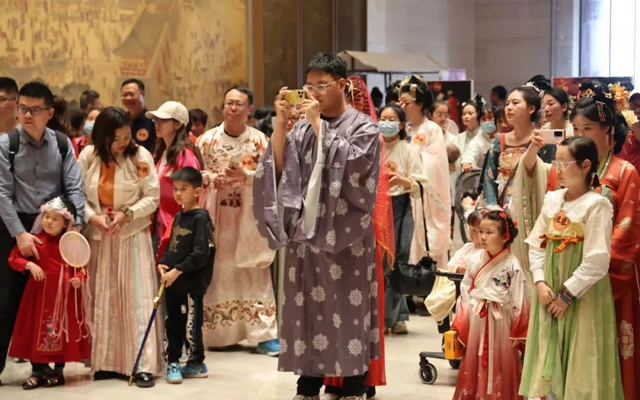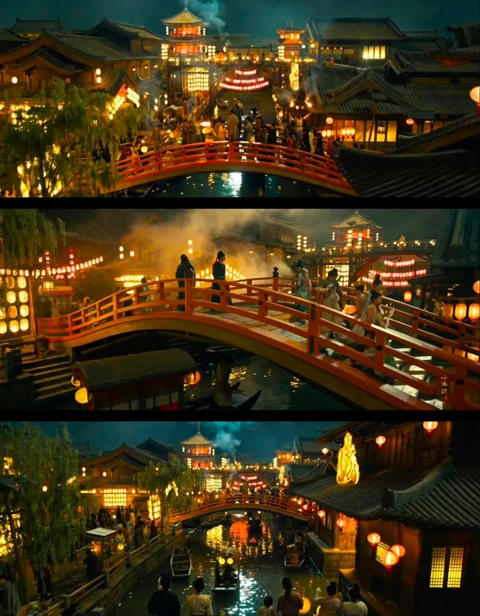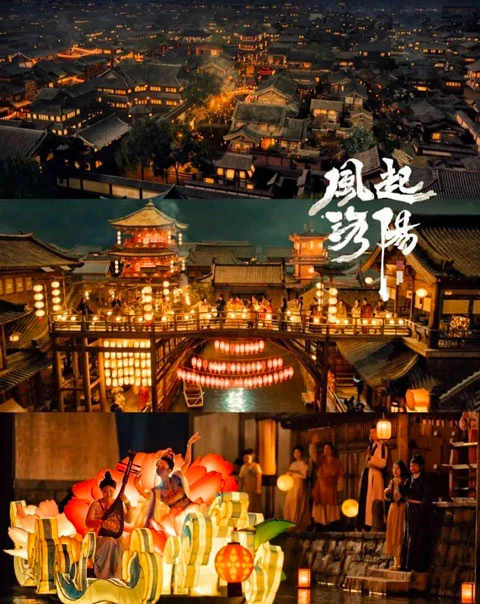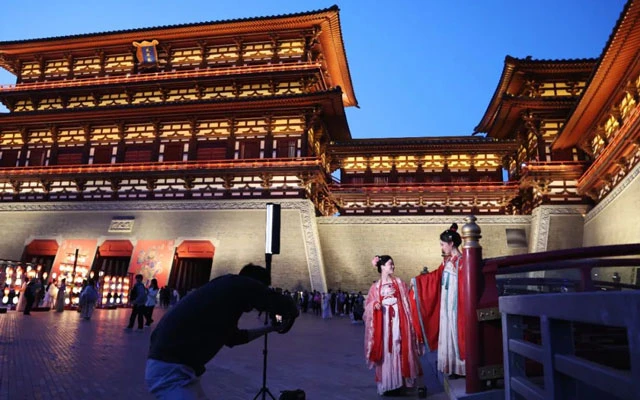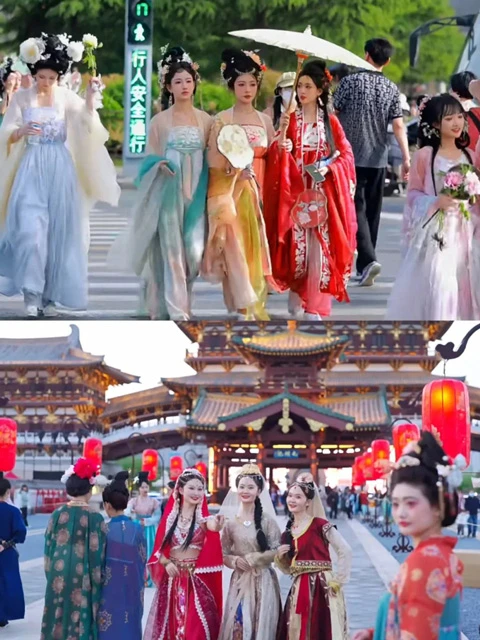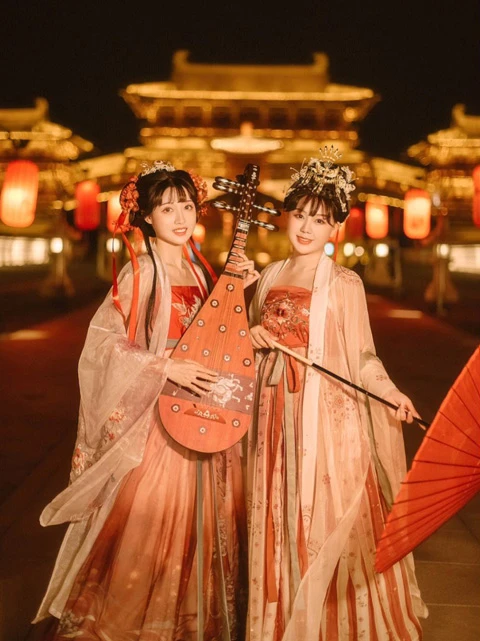In the bustling streets, adorned and towering-haired noblewomen in their fineries queue up outside the restaurant for their meals. Such a scene is not a time travel nor in a hanfu film and television city, but on the streets of Luoyang.
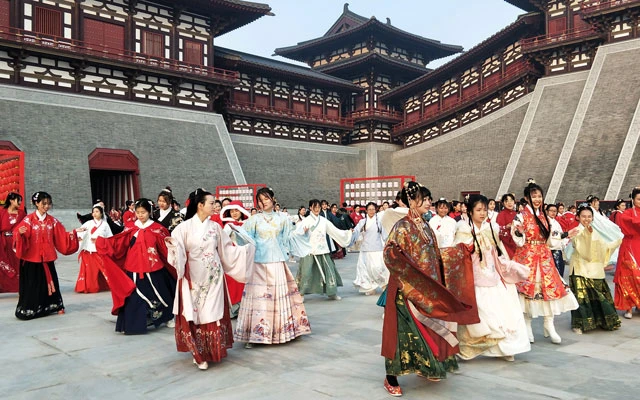
Encountering empresses while traveling to Luoyang is no longer a rare occurrence, at the same time, the magnificent and majestic Yingtian Gate, the decorated ancient city of Luoyi, and the mysterious and profound Luoyang Ancient Grave Museum have almost become the unified backgrounds for short videos of ancient style cosplay.
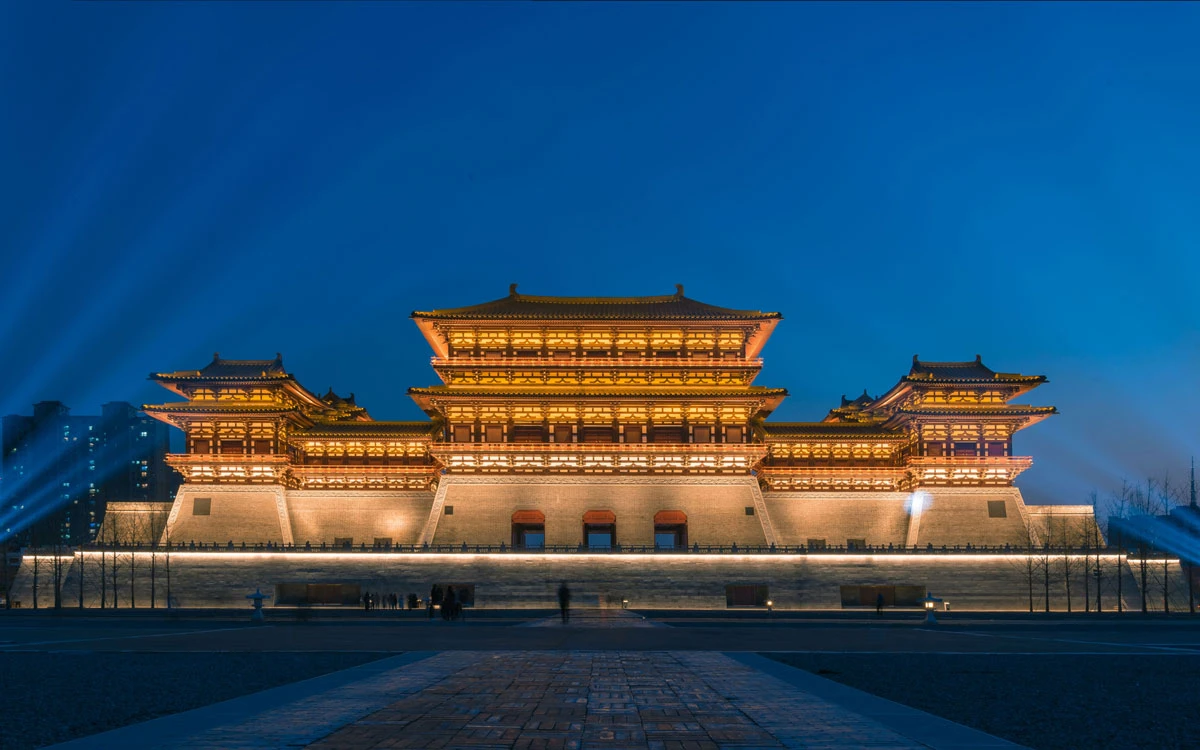
A time-traveling trip to Luoyang
Entering Luoyang, the classical atmosphere is very strong. The surrounding areas of Luoyi, Cross Street, Yingtian Gate, and other antique pedestrian streets are filled with shops offering hanfu experiences and dressing up.
Rows of different shaped and richly colored hanfu and a wide variety of ethnic costumes, inviting passing tourists through the glass windows, to open a journey through time and space on the streets of Luoyang.
As night falls, this antique street seems to switch to Tang Dynasty night market mode with young people in various dress styles competing for their favorite ancient scenery. Photographers holding cameras and fill lights, directing guests to pose, have become the busiest people in the entire ancient city.
Partial scenic spots offer free admission for those wearing hanfu, greatly enhancing the concentration of hanfu in the entire city. Tourists shuttling through antique buildings perhaps did not realize that they had inadvertently become part of the entire city of Luoyang.
In the company of the fluttering hanfu girls, ordinary tourists wearing modern clothing instead resembled time travelers who had stepped into the wrong era.
The long and profound history has created a tolerant urban atmosphere in Luoyang, and has also provided a vast space for imagination for time travel. In everyone's imagination of the prosperous story of Luoyang, whether it is the figure of a gorgeous robe or the exotic dress, perhaps it has already appeared in the streets.
Glimpses of the prosperous Tang Dynasty
Luoyang is the ancient capital city in Chinese history that has witnessed the most dynasties and lasted the longest. Thirteen dynasties, including Xia, Shang, Western Zhou, Eastern Zhou, Eastern Han, Northern Wei, Sui, and Tang, have all established their capitals here, leaving deep or shallow marks of their dynasties on this land.
The Sui and Tang dynasties in Luoyang represent the pinnacle of this city's magnificence and splendor. Unlike the capital city of Chang'an, the planning of Luoyang's capital followed the pattern of celestial phenomena, combined with the terrain of the mountains and rivers.
The entire Luoyang city was centered on the Longmen and Yique, with the Lu River flowing through the city. In ancient times, there were numerous markets in the city, and ships from foreign countries could be seen everywhere outside the city. Luoyang became a world-renowned Oriental commercial metropolis.
As of today, the vestiges of history quietly linger among tombs, grottoes, and ancient city ruins, where you can see glimpses of the grandeur of the thirteen dynastic capitals.
As of 2022, there are a total of 102 museums in Luoyang, including the Luoyang Museum, the Luoyang Ancient Grave Museum, and the Sui and Tang Grand Canal Cultural Museum. Among them, the Luoyang Ancient Tomb Museum is the world's first museum dedicated to ancient tombs, featuring 25 representative tombs spanning from the Western Han to the Song and Jin dynasties.
On the banks of the Yi River, the Longmen Grottoes stand silently. This large-scale grotto, excavated during the Northern Wei dynasty, extends nearly one kilometer along the cliff and features over 2,300 Buddha niches and more than 100,000 statues.
In the darkness of night, the reconstructed buildings are illuminated one by one. Although we, who are accustomed to urban architecture, may find it difficult to empathize with the feelings of the ancients who looked up at the city walls and pavilions, we are still awed by the city walls of Luoyang, the eastern capital.
Today's Luoyang is like a city hidden behind the Tang Dynasty. The numerous ancient-style buildings are beautiful and stunning enough to accommodate the myriad of fantasies that arise when one gazes upon the prosperous era.
In recent years, with the successive emergence of popular TV dramas such as "Luo Yang", "The Longest Day In Chang'an", "Legend of the Demon Cat", and "Strange Tales of Tang Dynasty", the beautiful costumes and grand sets have gradually constructed a Tang Dynasty aesthetic system in the public consciousness.

If given the opportunity to enter the divine capital depicted in these TV dramas, even if some scenes are fictitious or flawed, it does not hinder the fascination and love of young people for them.
For ordinary tourists, a time-travel journey through the ancient-style buildings in the city is undoubtedly a cost-effective choice. Therefore, it is not surprising that Luoyang has become known as the "Capital of Hanfu" and the "Capital of Time-travel".
However, the wave of Chinese-style tourism that has been sparked highlights the rich cultural heritage and profound cultural background that Luoyang is backed by, in the intense competition among tourist cities this year. What attracts young people is not only the antique buildings that appear in the films, but also the fascinating history of the ancient capital behind them. Antique blocks can be replicated, but there is only one divine capital of the Tang Dynasty. This is the unique feature of Luoyang.
